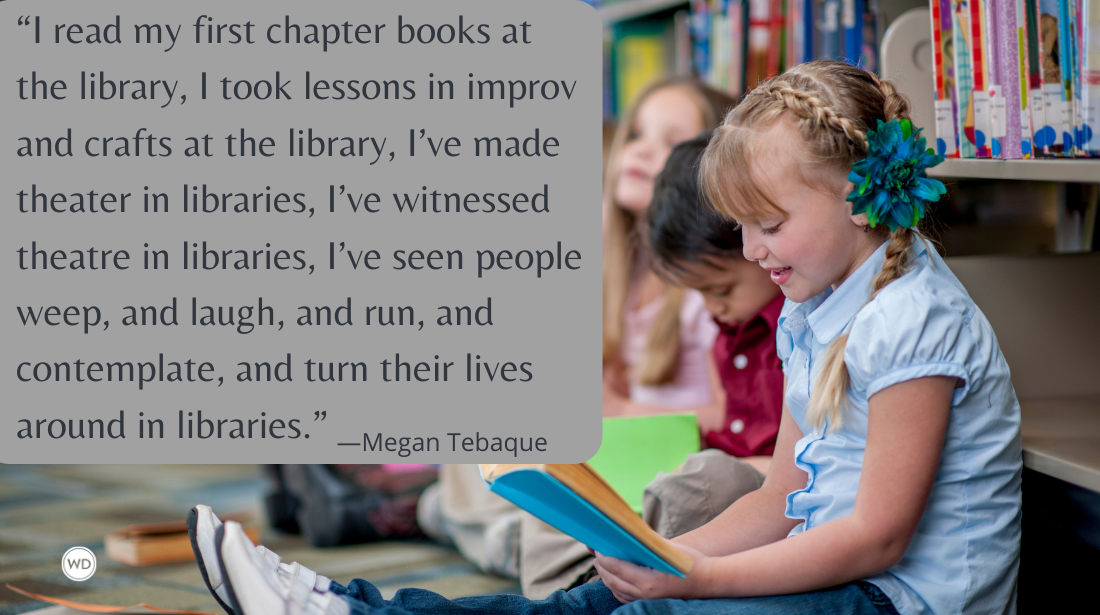The Importance of Grief and Loss in Fiction
Author Mark Stevens discusses the importance of grief and loss in fiction and why readers latch on to the ability of a character to overcome adversity.
Batman’s parents were murdered. Hamlet’s father, too. Dorothy Gale lost her home. (Well, maybe everything.) Scarlett O’Hara fell from high society. And privilege. If you got all four to sit down over a cocktail, think they’d have much to talk about? Grief. Loss.
In addition, they are characters who want to make sense of the world. They are all testing one world order against a new. Their journeys form the psychological gristle of their stories. Their reactions to these losses drive them—whether the losses happened before the story starts or along the way.
Put another way, static stories are not stories. Readers want upheaval. They want adversity. Your protagonist can’t smoothly climb a mountain. Ropes must break. Winds must howl. Fellow climbers might perish.
And our main characters must process as they go. They process life, death, and change. They process crises large and small.
Readers want their main characters tested. Intuitively, readers compare and contrast a character’s pickles and dilemmas with their own. How do people grapple with horrible things, the worst moments?
We learn from reading, both fiction and non.
In his brilliant and touching memoir, Half A Life, Darin Strauss processes the day he was an 18-year-old behind the wheel of a car when he accidentally killed a girl riding her bicycle. A classmate.
“I’ve come to see our central nervous system as a kind of vintage switchboard, all thick foam wires and old-fashioned plugs,” he writes. “The circuitry isn’t properly equipped, after a surplus of emotional information the system overloads, the circuit breaks, the board runs dark. That’s what shock is.”
Good stories rewire that switchboard—the inner workings of our view of the world. Life comes at us. And then life forms us. Life is certainly random. (Hello, Joe Chill.) And it’s equally heinous. (Feel free to scroll through a newsfeed on any old day.)
Life is full of unfairness, too. And sometimes we create our own misery. We conjure illusions about who we are. We tell stories and try to fool others. Pride and greed are powerful forces. And then, shame. The downfall. The come-uppance. The atonement.
Half A Life is about Strauss eating himself, quite literally, from the inside. It’s about his hope that writing would help. “I showed up here thinking that maybe I could retype my high school life entirely. As if one nostalgic evening could give my puberty an ending without drama, a calamity-free changeover to college: as if I could turn my memories into something like yours.”
As a writer of fiction, I wonder constantly about how others manage. How does Sam Bankman-Fried get through the day, knowing his customers are out billions? What was it like for Elizabeth Holmes to apologize, so profusely, in court? What is Alec Baldwin thinking today about fate?
What do we do with what life hands us? Or what we hand ourselves? Some of the worst wounds are self-inflicted. Shame and embarrassment are powerful drivers. How far will we go to protect the story we’ve been telling family, coworkers, customers? To the world? Ourselves? How far will we go to uphold the precious veneers we’ve concocted?
I thought a lot about these issues when writing about the main character in my Allison Coil Mystery Series because the main character, a female hunting guide in Colorado, is the survivor of a commercial airplane crash. I spent 20 years as a reporter and covered lots of random death. I was fascinated by the movie Fearless, based on the real-life airplane crash in Iowa in 1989 when 112 people died and 184 survived. Years later, I met a woman whose niece survived that crash. The niece walked out of the cornfield and got on another plane that same day to finish her trip to Chicago. (That’s fearless!)
I had to think hard about these issues after a friend suggested one half of the novel that became The Fireballer. “You should write a book about the first pitcher who throws a baseball so fast that hitters have no time left to swing,” he said.
We mulled his idea over lunch. At the current record speed of pitches thrown (106 miles per hour), a batter has 0.3 seconds to swing. That’s how quickly a ball will travel from mound to home plate. That chunk of time includes deciding whether to swing. And, if the answer is “yes, swing,” the question of what kind of stroke to use. 0.3 seconds!
If the pitcher in my would-be novel could throw faster than 106 MPH, there might be no time left to swing. It would be an existential crisis for the game. There would be no game left. (In real life, a pitcher who throws 100 is no longer a rarity.)
IndieBound | Bookshop | Amazon
[WD uses affiliate links.]
The novel idea had merit. I liked it. But it was too theoretical, too heady. It was missing something.
The second half of the novel dropped out of the blue that evening. Maybe writing five mystery novels meant my subconscious knew what to do. It was the character half of the story. It was an idea that made the first half click and come to life in a whole new way. Suddenly, I could see the whole story.
In the morning, I emailed my friend with the additional “what if” question that had me jazzed. “That’s it,” he said.
What if the pitcher in my would-be novel threw a pitch in Little League, when he was 12 years old, that hit and killed an opposing batter?
Put another way, what if the very thing that makes our “hero” such a hot topic of conversation (throwing a baseball) is also something that once took a life?
The idea gave my character weight. It gave the novel complexity. And, as a writer, it felt like I had much more work to do—a good thing. Not all novels are life and death. The “loss” can be more low stakes, of course. But the main character’s circuit must break. And be rewired.
What do we do with what life hands us? How do we react? How do we carry ourselves through life? Do we rely on others? Do we pretend it didn’t happen? How do we atone for a devastating accident? How does such a moment challenge our moral framework? Our view of the world? Our selves?
If there was a set, known, definitive, cure-all prescription for healing from grief we would all follow the steps and we’d be back to level ground with that torturous blip (whatever it was) fully in our past. But no such remedy or treatment exists, other than the mucky mess of the human struggle and acknowledging (unless your main character is a sociopath) that it’s very possible your life will lead to hurting someone else. Or that you might be hurt by another’s.
Then, of course, when the grieving for what’s lost is over, we want our main characters to test the limits of what they thought was possible and, maybe, redefine themselves. And see a new world at their feet. And in that process, as James Baldwin points out, help others.
“You think your pain and your heartbreak are unprecedented in the history of the world, but then you read,” said James Baldwin. “It was books that taught me that the things that tormented me most were the very things that connected me with all the people who were alive, or who had ever been alive.”
That’s a lot of connection. And yet the paradox is we spend so much time believing we are alone—castaways in the dark and cold. After all, each of us is the only human we will ever know in full. Yet Baldwin and many others know life’s torments, and the grief that accompanies those times, are part of the cosmic wiring that runs through us all.
As writers, we launch tens of thousands (hell, millions) of more characters out into the world to grapple with life’s random ills and miseries. And readers, eager to share in the journeys and challenges, say thanks.
Mark Stevens is the author of The Fireballer (coming Jan. 1, 2023 from Lake Union) and The Allison Coil Mystery Series including Trapline and Lake of Fire. He is also co-publisher of Running Meter Press, which has been publishing the works of the late Gary Reilly since 2012. More at Mark’s website and Gary Reilly’s too.








